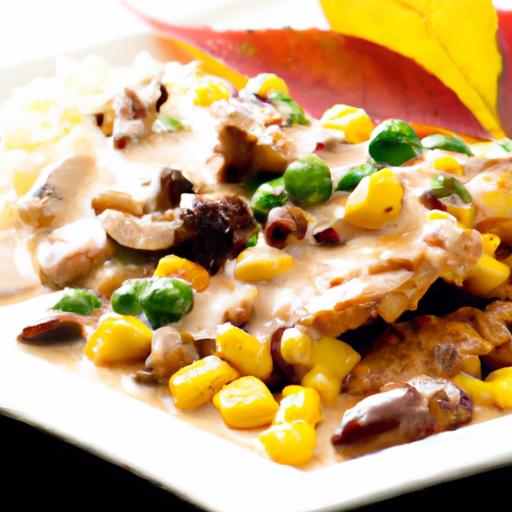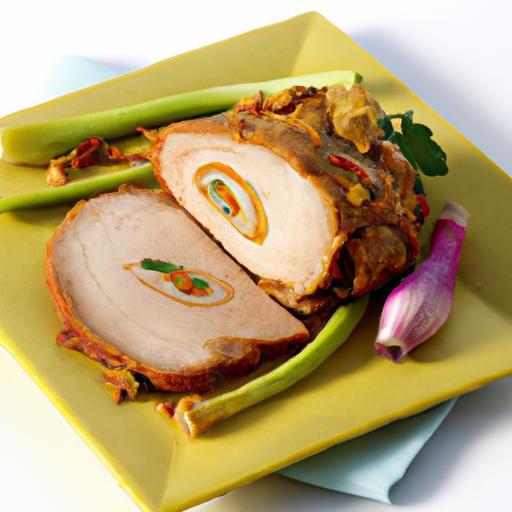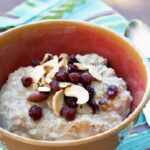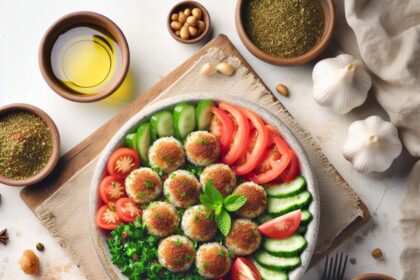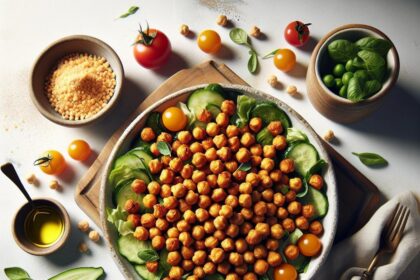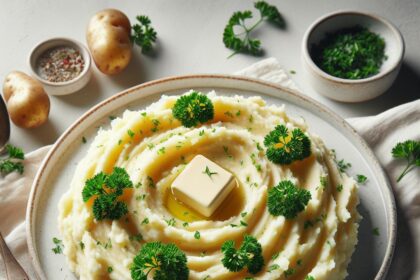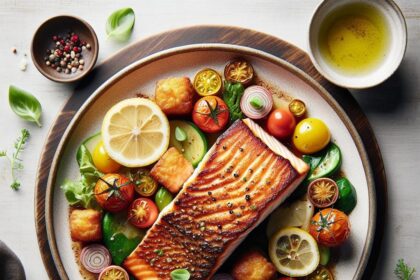When the midday hunger pangs hit or last night’s leftovers beckon, the microwave often becomes the go-to savior. But what if you could breathe new life into your food without zapping it into a rubbery afterthought? Welcome to the art of reheating done right-a world where crispiness is restored, flavors get a second chance to shine, and your meals emerge as delightful as when they were first cooked. In this article, we’ll explore clever, microwave-free methods to warm up your food, proving that reheating can be just as creative and delicious as the original cooking itself. Say goodbye to soggy, uneven bites and hello to your kitchen’s new secret tricks.
Understanding the Science Behind Even Heating Without a Microwave
Warm It Up Right: Clever Ways to Reheat Food Sans Microwave taps into the art and science of heat transfer to breathe new life into your leftovers. Whether it’s a golden-crisp pizza slice or a delicate casserole, the goal is uniform warmth without turning your meal into a dried-out shadow of its former self. Achieving even heating is about controlling temperature, moisture, and time-helps your food retain its texture, flavor, and nutritional value.
Prep and Cook Time
- Preparation: 5 minutes
- Cooking/Reheating: 10 to 25 minutes depending on method and food type
Yield
- Serves 2-4 people depending on portion size
Difficulty Level
- Easy to Medium – perfect for home cooks looking to master stovetop and oven techniques
Ingredients
- Leftover cooked food of choice (rice, pasta, meat, vegetables)
- 1-2 tablespoons olive oil or butter
- 2-4 tablespoons water or broth (to maintain moisture)
- Optional: fresh herbs, spices, lemon juice for finishing touches
Instructions
- Stovetop Even Heating: For rice, pasta, or stir-fry leftovers, start by heating a non-stick skillet over medium-low heat. Add 1 tbsp olive oil or butter to prevent sticking.
- Place your leftovers in a single, even layer. Sprinkle in 2 tablespoons of water or broth to create steam that preserves moisture.
- Cover tightly with a lid to trap steam. Heat for 5-7 minutes, gently stirring halfway through to ensure all bites receive equal warmth.
- Oven Technique: Preheat your oven to 325°F (160°C). Transfer leftovers to an oven-safe dish, spreading evenly.
- Lightly drizzle some olive oil or melted butter over the surface to crisp edges and add richness.
- Cover dish with foil to lock in moisture; bake for 15-25 minutes depending on quantity, removing foil for the last 5 minutes if you want a slight crisp finish.
- Innovative Tools and Tricks: Use a double boiler or bain-marie for precarious dishes like custards or delicate sauces-this indirect heat method warms gently and uniformly.
- Try a silicone steamer basket in boiling water for vegetables; this preserves vibrant color and texture while reheating evenly.
- For bread and pastries, revive their crispness by wrapping in foil and warming in a toaster oven or conventional oven at medium heat for 8-10 minutes.
Tips for Success
- Always stir or rotate contents halfway through reheating to prevent hotspots or dryness.
- Adjust moisture by adding broth or water sparingly to prevent sogginess.
- Resist cranking heat; lower temperature ensures balanced warming without rubbery results.
- Consider seasoning at the end to refresh the vibrancy lost in refrigeration.
- Invest in quality cookware like heavy-bottomed pans and well-sealing lids to enhance heat control.
- Use an instant-read thermometer for dense foods to confirm safe internal temperatures (165°F / 74°C recommended).
Serving Suggestions
- Plate reheated meals on warmed plates to maintain temperature longer at the table.
- Garnish with fresh herbs such as parsley, cilantro, or basil to add freshness and a pop of color.
- Add a drizzle of good-quality olive oil, a squeeze of lemon, or a sprinkle of flaky sea salt to elevate flavors after reheating.
- Pair reheated dishes with crisp side salads or lightly steamed greens for a contrasting texture.
| Nutrient | Per Serving (Approx.) |
|---|---|
| Calories | 200-350 kcal (variable by dish) |
| Protein | 8-15g |
| Carbohydrates | 20-40g |
| Fat | 5-15g |
Explore creative ways to store and preserve leftovers to complement these reheating methods.
For detailed food safety guidelines on reheating, visit USDA Food Safety Tips.

Q&A
Q&A: Warm It Up Right – Clever Ways to Reheat Food Sans Microwave
Q1: Why would I want to reheat food without a microwave?
A: While microwaves are quick, they sometimes zap texture and flavor from your leftovers. Reheating food without one lets you preserve crispness, moisture, and that freshly-cooked taste-plus, it’s a chance to get creative with your kitchen tools!
Q2: What are some foolproof stovetop tricks to warm up leftovers?
A: The stovetop is a champion for even heating. For soups and sauces, gently simmer in a pot to keep flavors vibrant. For dishes like pasta or stir-fries, toss them in a lightly oiled pan over medium heat, stirring frequently to heat through without drying out.
Q3: Can the oven make my reheated food taste better?
A: Absolutely! The oven is perfect to revive crispy textures. Wrap casseroles or baked dishes in foil and heat at 325°F (160°C) until warmed through. For pizza and fries, skip the foil to restore crunch with a quick 10-minute session on a baking sheet.
Q4: What about reheating rice or grains without a microwave?
A: Steaming is your friend here. Place rice in a sieve or colander over simmering water, cover with a lid or foil, and let the gentle steam fluff it up again. Alternatively, stir rice with a splash of water in a non-stick pan on low heat, covering it loosely to trap steam.
Q5: How can I reheat bread and pastries and keep them fresh?
A: Wrap bread in foil and pop it in a 350°F (175°C) oven for about 10 minutes to warm without drying out. For croissants or pastries, a quick reheat on a skillet over low heat, turning occasionally, keeps them flaky and fresh.
Q6: Is reheating food without a microwave time-consuming?
A: It can be a bit slower but often worth the wait! Techniques like stovetop, oven, or steaming take a bit more time than zapping in a microwave but pay off with tastier, better-textured meals.
Q7: Any tips to prevent leftovers from drying out during reheating?
A: Definitely! Add a splash of water, broth, or sauce to keep moisture in. Cover pans with lids or foil to trap steam, and avoid high heat which can toughen or burn your food. Patience and gentle heat are the keys to success.
Q8: Can I use an air fryer to reheat leftovers?
A: Yes! The air fryer is a fantastic microwave alternative, especially for fried or crispy foods. Its hot circulating air crisps up leftovers in minutes with less sogginess and no soggy spots.
Q9: What about foods that don’t reheat well?
A: Some foods like salads, sushi, or delicate dairy-based dishes don’t typically benefit from reheating. It’s best to enjoy these fresh or repurpose components creatively (like turning cold roasted veggies into a warming soup).
Q10: Any final words on mastering the art of reheating without a microwave?
A: Embrace the opportunity to rediscover your leftovers-each method offers a chance to revive flavors and textures in ways the microwave can’t match. With a sprinkle of creativity and a pinch of patience, you can transform yesterday’s meal into today’s delight!
The Way Forward
As you discover these clever, microwave-free methods to warm up your meals, you’ll find that reheating can be just as exciting as the original cooking. From gentle stovetop simmers to oven embraces and even clever use of steam, your leftovers will come alive without the dreaded rubbery texture or cold spots. So next time hunger strikes and the microwave isn’t an option, remember: warming up right is an art-and now, you’ve got the perfect palette of techniques to master it. Embrace the warmth, savor the flavors, and turn your leftovers into something truly delicious once more.